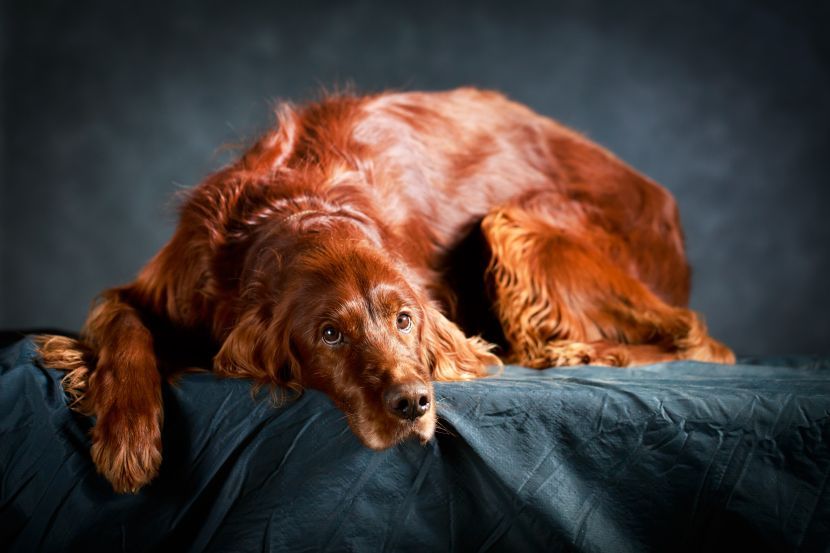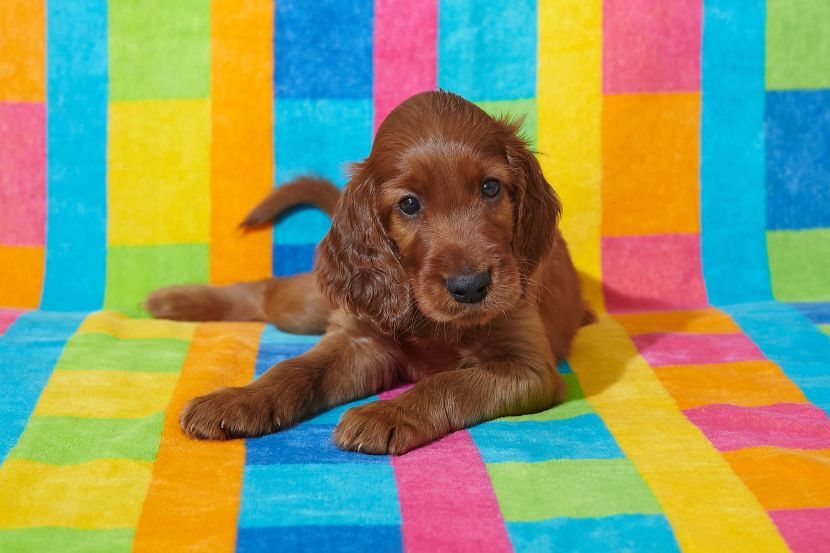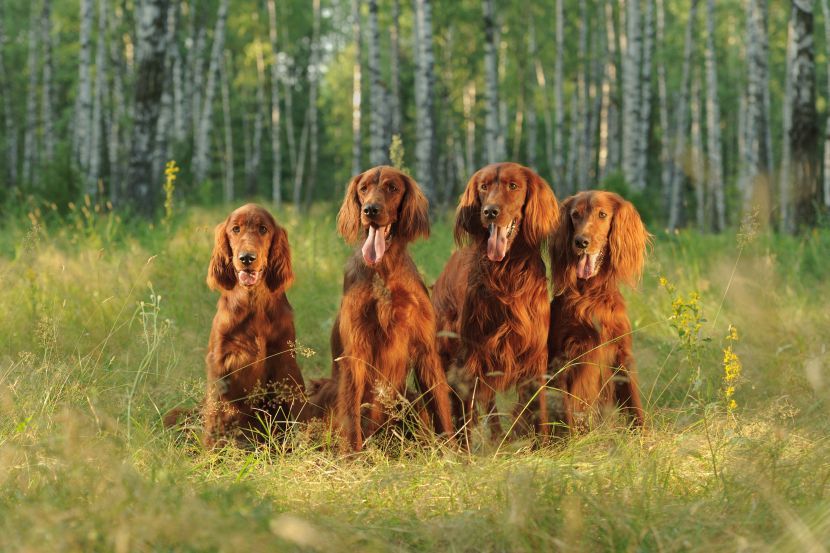
Originally from the Emerald Isle, this red beauty is always in the mood for play and activity, but is an unreliable watchdog, as she also looks forward to meeting strangers.
The Irish Red Setter is a popular breed of dog with a medium-length, copper-red silky coat.
It is excellent as a pet and a great companion for sports enthusiasts. It is very elegant and extremely friendly, writes Thesprucepets.
Originally bred for bird hunting, the Irish Red Setter has become sought after for its beauty, friendly temperament and work ethic. He adapts well to living with children and other pets, but he will not associate with small animals that are his natural prey.

Standard
According to the FCI standard, the Irish Red Setter belongs to Group VII - Poultry Breeders, Section 2 - British and Irish Poultry Breeders, Subsection 2.2 - Setter and is subject to a work test. The Irish Setter standard is number 120.
His height is from 63.5 to 68 cm, while his weight is from 27 to 32 kilograms. The lifespan of this beauty, which is unfortunately not seen as often as it used to be, is 12 to 15 years.
Origin
Despite the red "coat", the Irish Setter originates from the Emerald Isle. This breed was developed in Ireland to help bird hunters, before the advent of firearms.
Setters use their keen sense of smell to detect birds. They "sit" or take a low stance where their body almost touches the ground, until the bird flies out of hiding. When the hunter closes, the dog goes for the catch with lightning speed.

Bird hunters in Ireland were looking for a dog that would move quickly over the open terrain of the Irish countryside and be an attentive and patient hunting dog. In the early 19th century, hunters looked to spaniels, English setters and Gordon setters to breed a fast bird dog. The result was a red and white setter-type dog that became known as the Irish Setter. Over time, a dog with exclusively red hair without white spots was created. Today, a coat with traces of black is considered a fault in the appearance of the breed, although it is not a disqualifying factor for show dogs. The eyes of the Irish Red Setter are not large, they are hazel or dark brown in color.
With a striking appearance and cheerful temperament, the Irish setter has spread to the British Isles and the USA. This was one of the first breeds to gain recognition from the American Kennel Club (AKC) in 1878. Red Setters, as they are sometimes called, have evolved into two subtypes: field and show. The setter that participates in exhibitions has a fluffy red coat, heavy bones, is tall and long-legged. The "Polish" type setter is bred to retain working abilities: although it has a characteristic mahogany coat, its fangs are fewer, its bones are finer and its body is more compact.
Both types of setters love to work and please their owners. The breed is among the 100 most popular dog breeds in the US. In addition to the red setter, there is also the Irish red and white setter, with a more balanced temperament, which is registered under number 330 in the FCI standard.
Temperament
This is a family dog, friendly and playful, which makes it an ideal companion for owners of all ages. It is very intelligent and easy to train, whether it is participating in sports or training for everyday life. He usually gets along well with other dogs and cats, but small pets cannot live with him. He also reacts friendly to strangers, so he is not a good choice for a guard.
Training
In order to maintain balance and a good mood, the Irish Setter must have daily, at least one hour of activity. He loves energetic walking, running, playing and fetching balls. Ideally, he should stay in a fenced yard, where he can be free and safe. However, you still have to take him for a run.

Care
The Irish Red Setter's coat is a glossy chestnut brown without any trace of black. Zappers are typical and appear on the ears, chest, legs and tail. He may have whiteness on the chest, neck, chin or fingers, or a small star on the forehead, a narrow spot, whiteness on the nose or muzzle.
Caring for his beautiful red "coat" is not as difficult and time-consuming as it seems. A few brushing "sessions" per week and an occasional bath are the minimum. His undercoat becomes thicker in winter, and with the approach of spring, the dog sheds. Therefore, regular brushing is necessary to remove dead hair and prevent the accumulation of "hairy" balls in the apartment.
Training course
The friendly nature of the Irish Red Setter is not a guarantee of easy training: this dog needs a patient and consistent trainer. Socialization should start at an early age, with people of all ages and animals large and small. Do not forget that the setter was created to hunt, so do not even think about keeping small animals in the apartment.
The Irish Red Setter is great with a ball, a great swimmer and good at agility. His calm nature and patience make him a good therapy and service dog. But beware: the breed's natural affinity for human company means the possibility of separation anxiety. The Irish Red Setter does not like to be alone for long.
Health
This is a resistant dog, but as with most purebred dogs, there are predispositions to some diseases. The Irish Red Setter can be prone to kidney disease, epilepsy, hip dysplasia, hypothyroidism, gluten allergy, Von Willebrand's disease, hereditary eye diseases and gastrointestinal disorders. Before getting a dog of this breed, do tests for hereditary eye diseases and hip imaging.
Nutrition
The superb form and good health of the Irish Red Setter are unthinkable without quality food. This active breed requires a high protein diet that will provide energy for outdoor activities or everyday entertainment. Do not allow him to swallow food too quickly, as he is prone to bloat. If it turns out that he has this problem, get a bowl for "slow" feeding of voracious pets or divide his meals into smaller portions.


